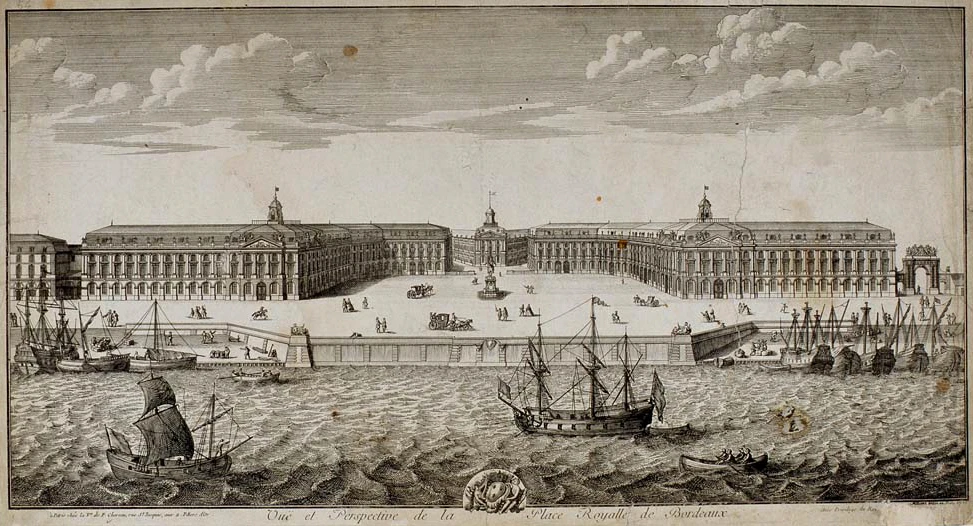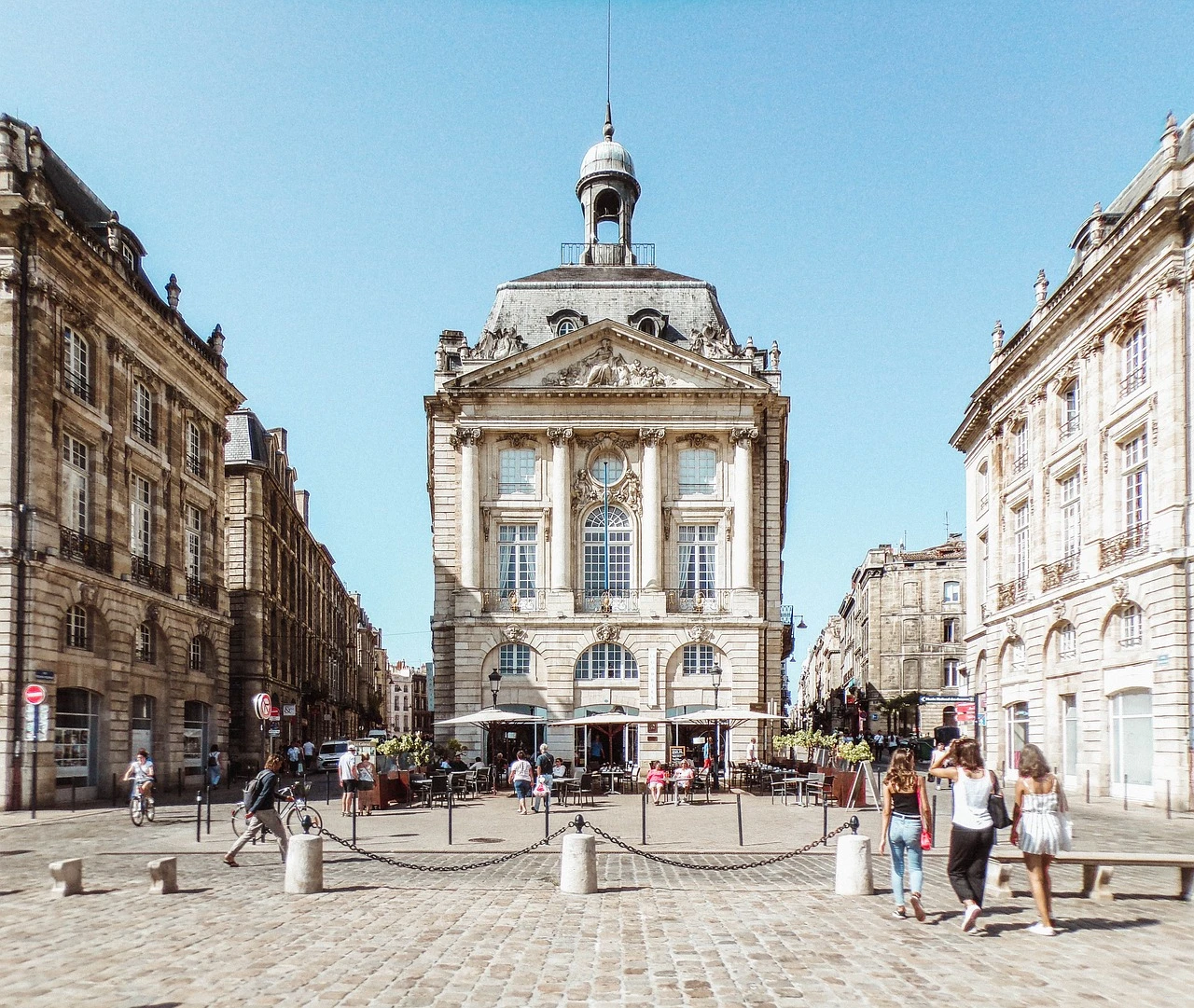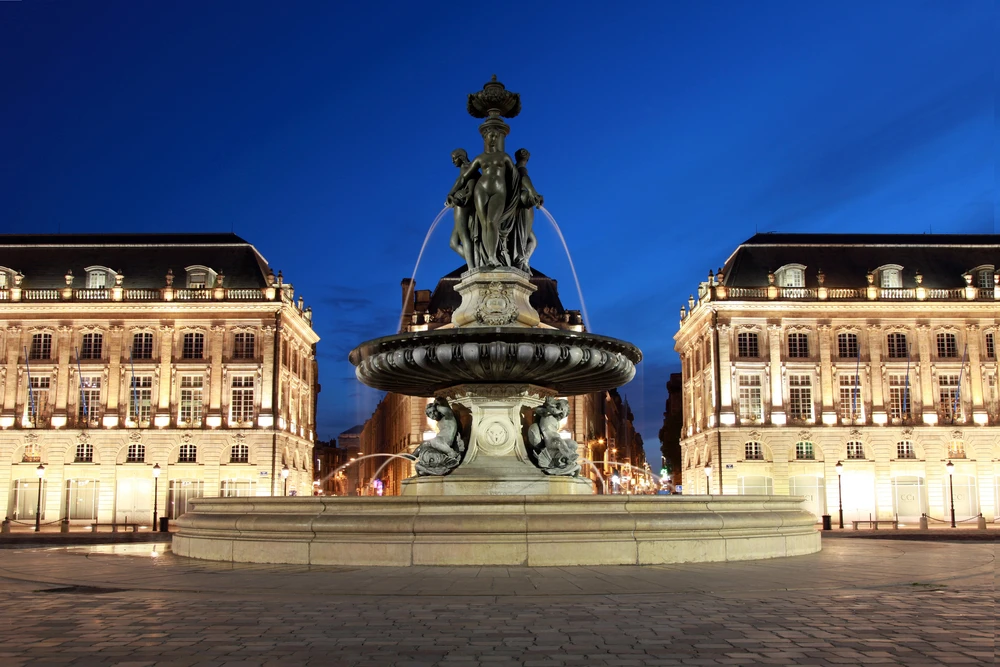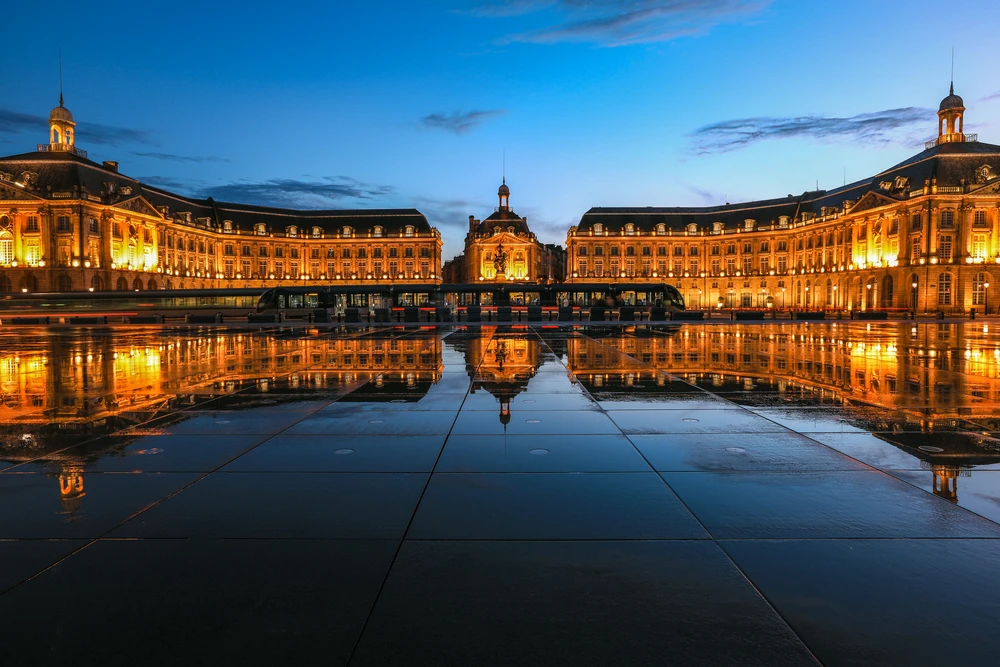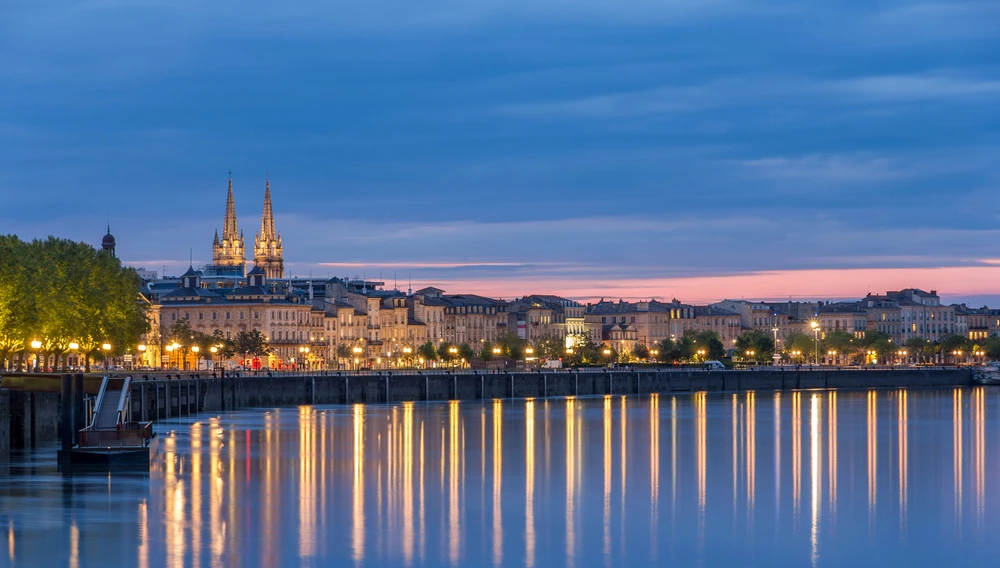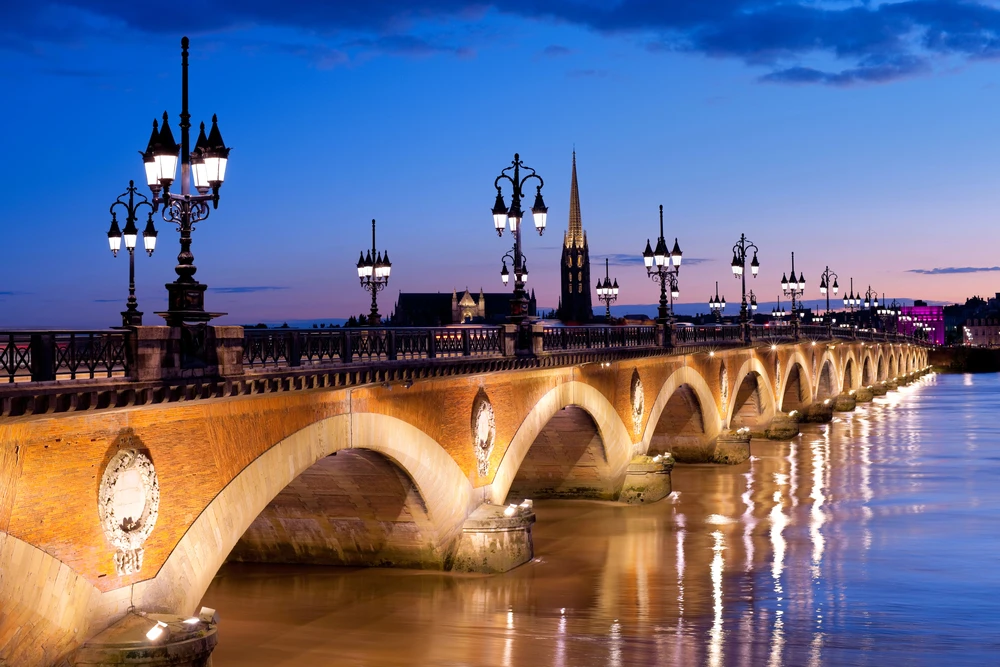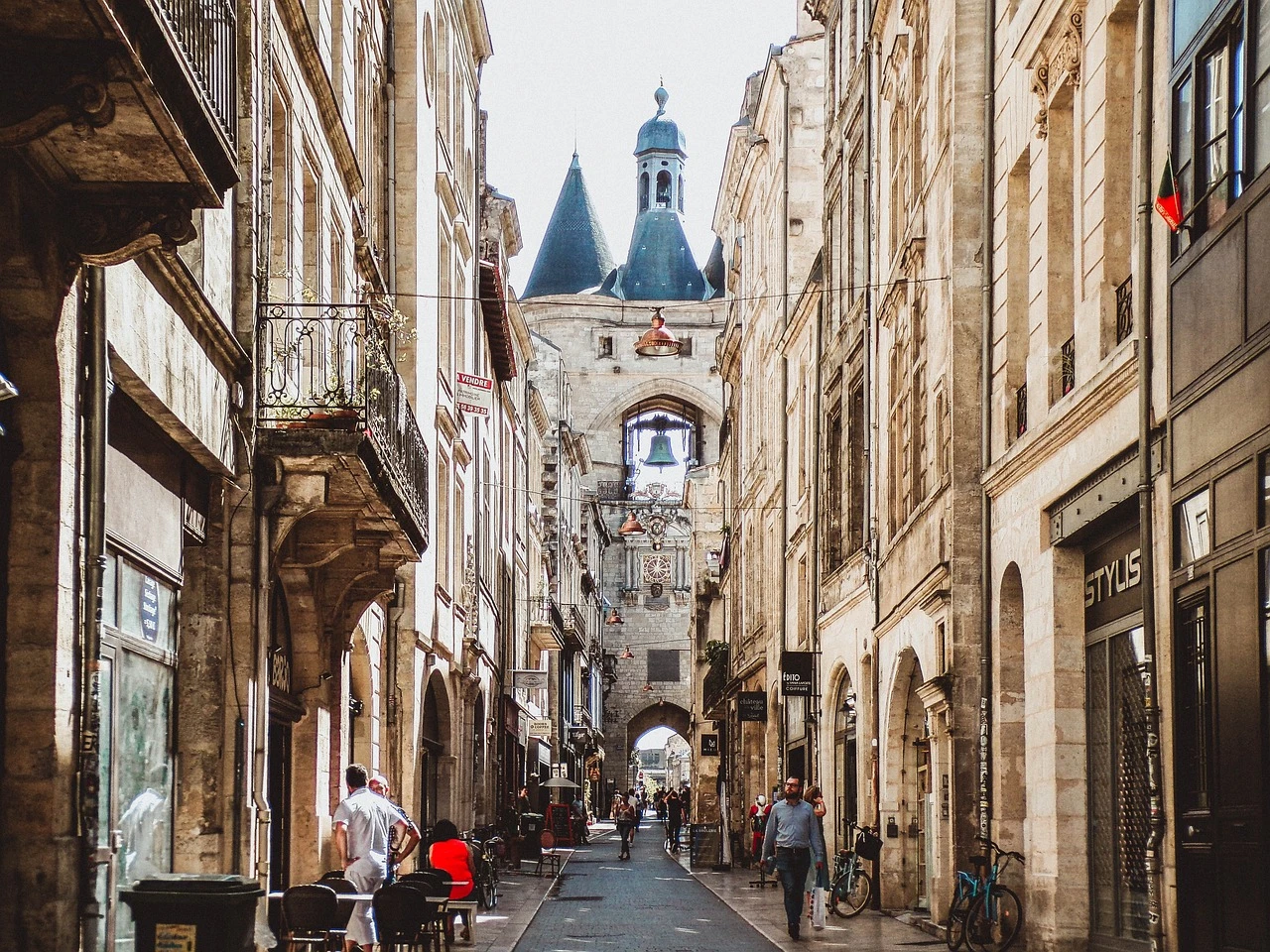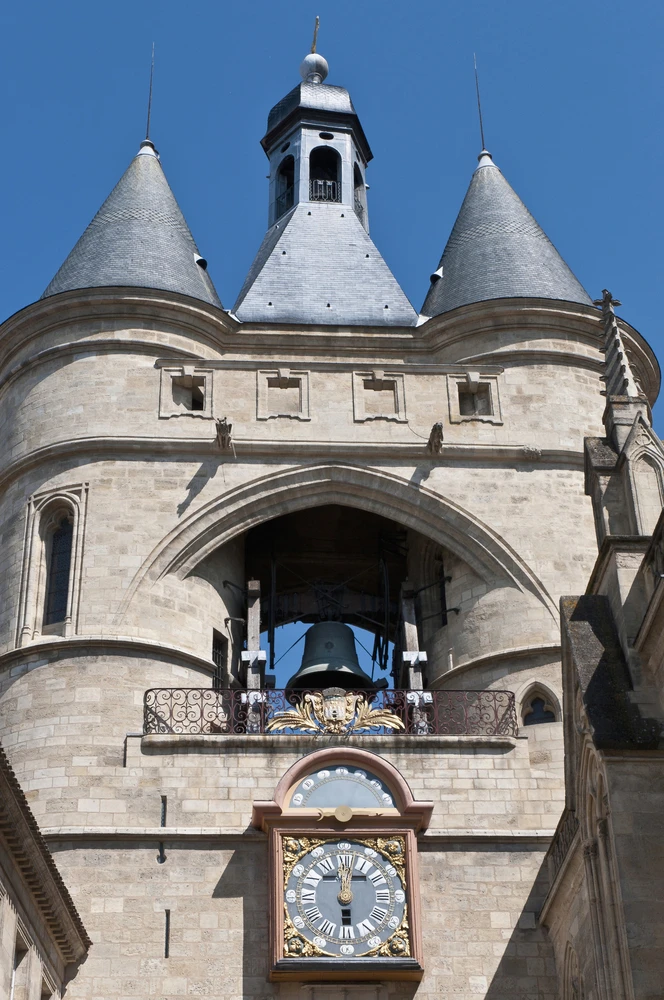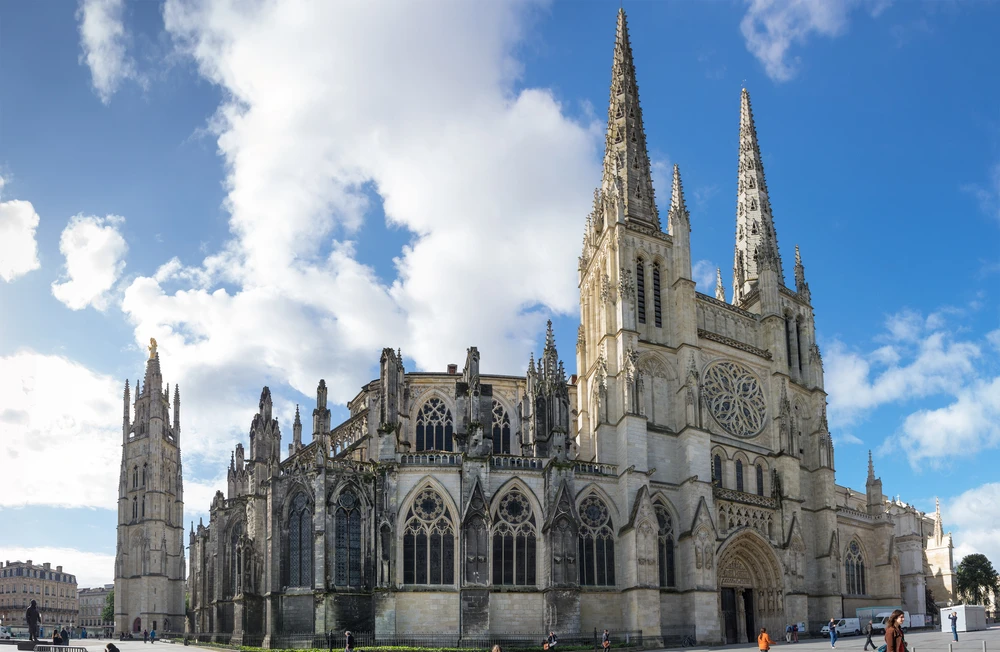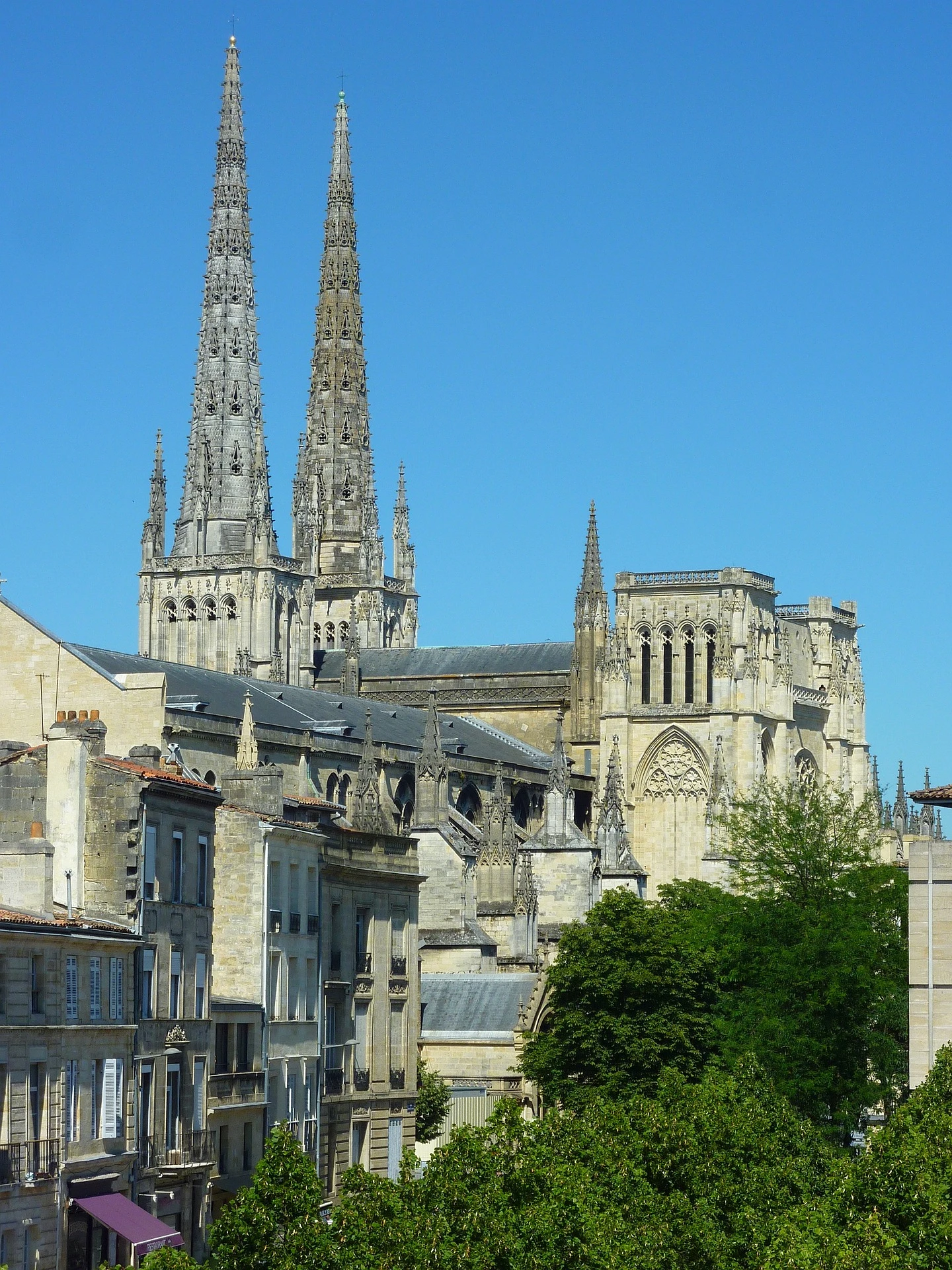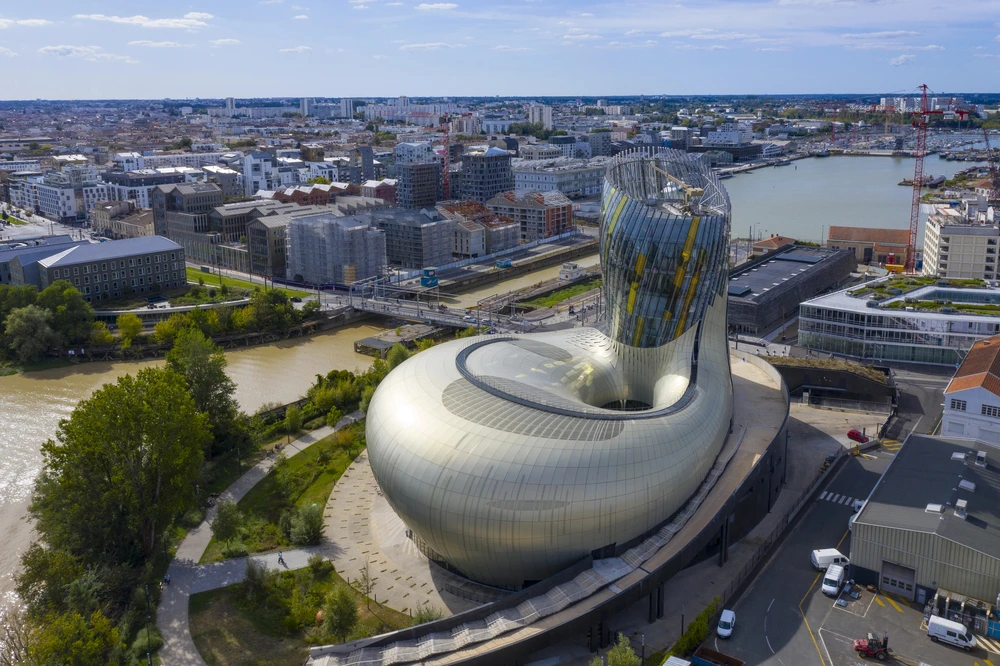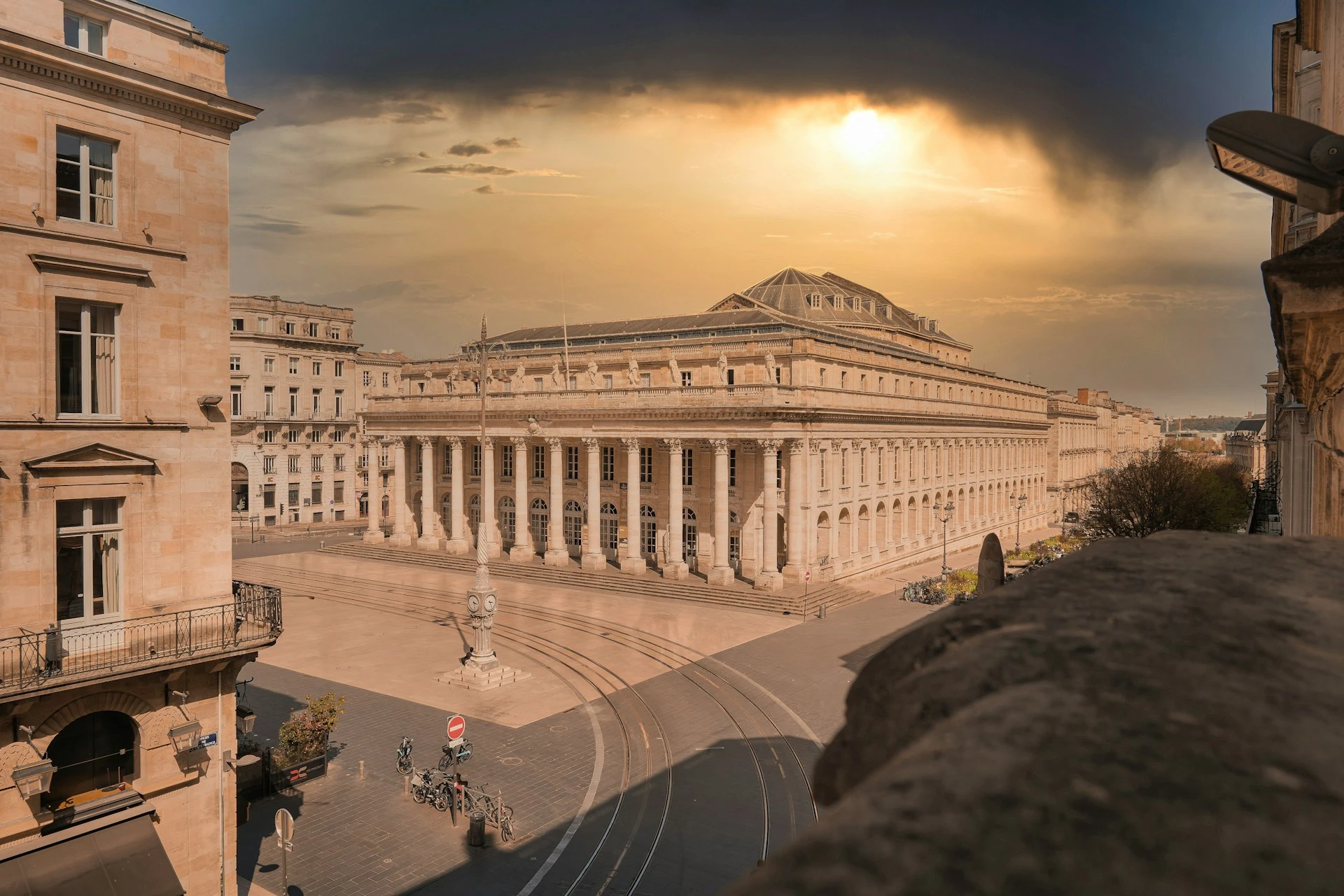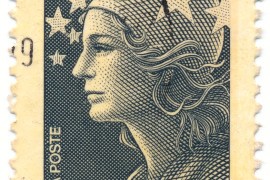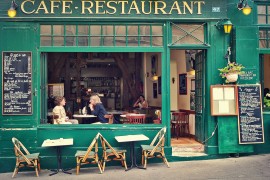Before we begin, a word to remind you that there is no official classification of the wonders of Bordeaux. The one you're about to discover is the one I decided on myself, with places I found superb, which doesn't mean that others aren't so.
1 Place de la Bourse and the water mirror
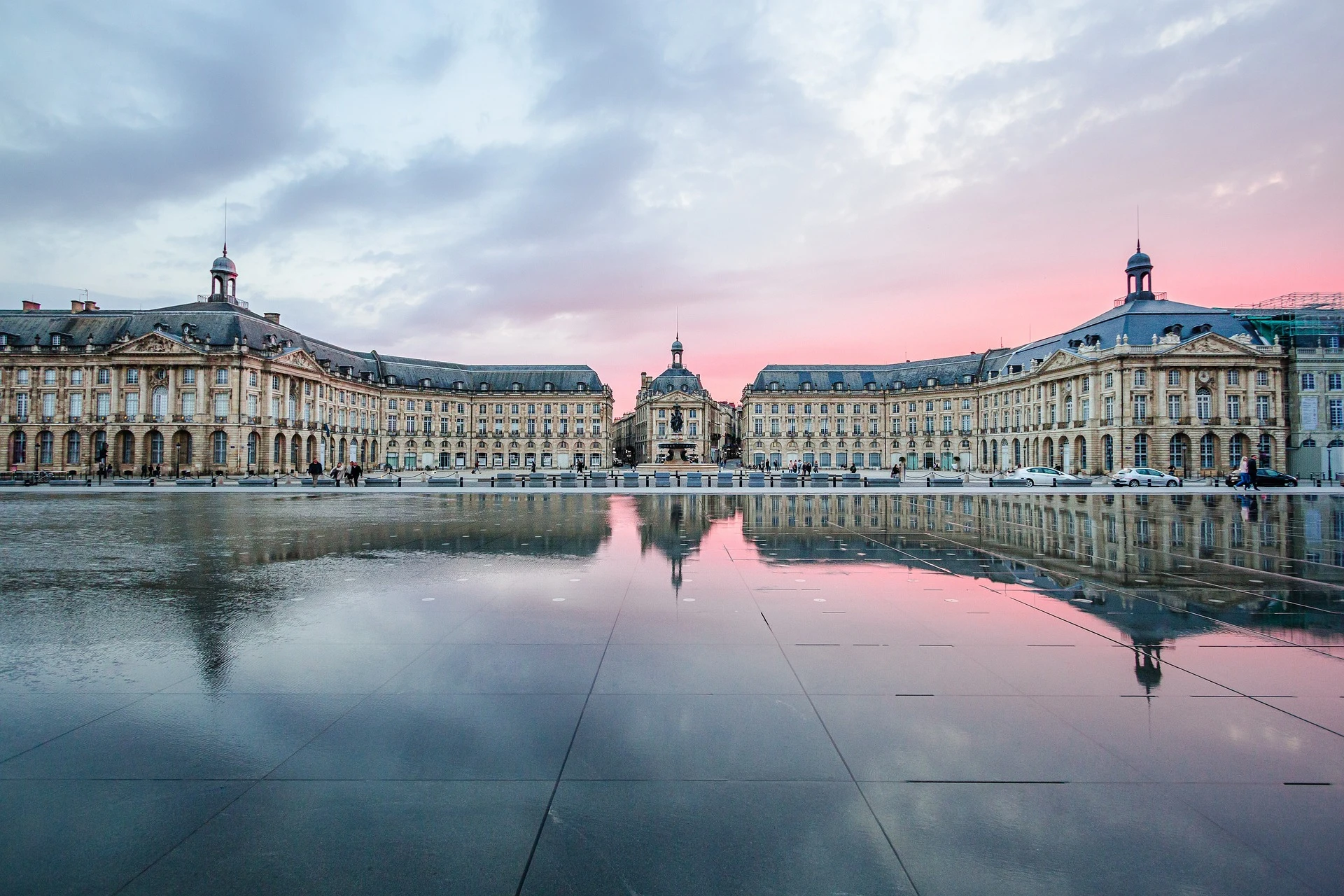 Magnificent Place de la Bourse. Photo chosen by monsieur de France: by JonathanRieder from Pixabay
Magnificent Place de la Bourse. Photo chosen by monsieur de France: by JonathanRieder from Pixabay
It's one of the most beautiful squares in France, and even in Europe, and it reflects Bordeaux as much as the water in the mirror reflects the superb 18th-century buildings, the era in which it was born. Open onto the Garonne, the river that gave birth to the city and made it prosper, it reflects Bordeaux because the Bourse reminds us that we're here in one of Europe's oldest trading cities, with links to every continent and every era. It also reflects the city in its elegance without glitz. A true balance of beauty, underscored in 2006 by the creation of the famous water mirror that seems to split the building in two, offering incredible opportunities for photographers and heritage enthusiasts alike.
The Place de la Bourse with the Hôtel des Douanes on the left and the Hôtel de la Bourse on the right. Photo chosen by Monsieurdefrance.com: sablin via depositphotos
Designed by Jacques V GABRIEL (1667-1742) in 1730 and completed in 1755 by his son Ange-Jacques GABRIEL (1698-1782), it is one of the finest works of the Gabriel family, to whom France owes some of its finest treasures , including the Place de la Bourse in Bordeaux, the Place de la Concorde in Paris and the Opera House in Versailles.
2 large buildings: l'hôtel des fermes and l'hôtel de la bourse.
The square is made up of 2 large arcaded buildings with two storeys, an attic and a slate roof. With your back to the Garonne, to your left (south) you'll see the former Hôtel des Farms, now the Musée National des Douanes, and to your right (north) the former Bourse, now the Chambre de Commerce et d'Industrie. Look closely at the two buildings, and you'll discover numerous sculptures , such as Minerva (protecting the arts) and Mercury (protecting trade) above the customs house, Neptune opening up trade, Time discovering the truth, and also, on the many mascarons, the faces of Neptune, Bacchus, carnival masks, angels and even wild beasts. There are also faces of African women, a reminder that Bordeaux was one of the main ports of the slave trade. As I was saying, the Place de la Bourse reflects the city and its history, even the saddest. Talking of masks, always look up when you're walking around Bordeaux, the city has over 3,000 of them, all different.
The Place de la Bourse as seen in the 18th century, with the statue of Louis XV in the center, which has since disappeared. Illustration chosen by monsieurdefrance.Com: By Alexandre Antoine Marolles - Bibliothèque nationale de France, Domaine public, https://commons.wikimedia.org/w/index.php?curid=112840886
The central pavilion
The central pavilion. Image chosen by Monsieur de France: by Niki Nagy from Pixabay
The central pavilion of the Place de la Bourse, set back a little, is a restaurant called "le Gabriel", which recalls the name of the architects who designed this magnificent place.
The Fountain of the 3 Graces.
The Fountain of the Three Graces, by night. Photo chosen by monsieurdefrance.com: Boarding2Now via depositphotos
Place de la Bourse is a royal square, in other words, it was originally dedicated to the king. In this case, Louis XV at the time of its construction (Rennes did the same with its Place de la Mairie, or Nancy with its Place Royale, now Place Stanislas). At the center of the square was an equestrian statue of Louis XV at the time of its inauguration. A few years later, the French Revolution caused the statue to disappear, replaced for a time by a tree of liberty, then by a marble column topped by a globe. In 1869, the current fountain was installed, designed by Charles Gumery (1827-1871) to a drawing by Louis Visconti (1791-1853). It represents the three graces: Euphrosine, Aglaé and Thalie, daughters of Zeus and personifying charm, beauty and grace. Gumery is said to have been inspired by the faces of sovereigns of his time, namely Empress Eugenie, Queen Victoria and Queen Isabella of Spain.
The water mirror
It was begun in 2004 and completed in 2006. It's the world's largest water mirror, at 3,450 m2. It's not static - on the contrary, it comes alive all day long. It runs from 10am to 10pm every day (except in winter and for maintenance), and always in the same way: 3 minutes of filling, 15 minutes of still water for the mirror effect, 5 minutes to empty and 3 minutes of fog to finish.
The water mirror and the Place de la Bourse by night. Photo chosen by monsieurdefrance.com: depositphotos.
Going to Place de la Bourse in Bordeaux
The address is: Place de la Bourse / 33 000 Bordeaux
Parking: Place de la Bourse, under Place Jean Jaurès and Cours du Chapeau Rouge.
Tramway: lines C and D stop Place de la Bourse.
2 The quays of Bordeaux
The quays of Bordeaux in the evening. Photo chosen by monsieur de France: Leonid_Andronov via depositphotos
From the Gare Saint Jean to the Bassin à Flots, via the Place de la Bourse, Bordeaux's quays stretch for more than 4 km. Made up almost entirely of 18th-century buildings, they're an attractive sight. They form the left bank of the Garonne River, bordering what's known as the "Port de la Lune", an 1810-hectare ensemble of great beauty and rich heritage, which has earned it UNESCO World Heritage status. The Quai des Marques, with its 33 boutiques selling designer clothes and accessories at factory prices, is well worth a visit, as are the many restaurants and green spaces that punctuate this beautiful area.
Going to the quays of Bordeaux
There are several quays, including Quai Richelieu quai des salinières (overlooking the Pont de Pierre), Quai du Maréchal Lyautey (overlooking the Place de la Bourse), Quai Louis XVIII (overlooking the huge Place des Quinconces) and Quai du Bacalan (overlooking the Cité du Vin).
Tramway: line A
3 Le pont de pierre / The stone bridge
The stone bridge in Bordeaux at night. Photo chosen by Monsieurdefrance.Com: SergiyN via dépositphotos.
This bridge, the first in Bordeaux's history, is emblematic of the city, spanning the Garonne to link the historic center of Bordeaux with the Bastide district. It is a technical feat of the 19th century. Erected by 4,000 workers between 1810 and 1822 on the orders of Emperor Napoleon 1st, and widened in 1954, it measures 487 metres and comprises 16 piers and 17 stone arches .
To le pont de pierre / the stone bridge
Address: Pont de Pierre / 33 000 Bordeaux
Streetcar: line A to Stalingrad.
4 La grosse horloge / The big clock
La grosse horloge seen from the street. Photo chosen by Monsieur de France: by Niki Nagy from Pixabay
A building that tells the story of Bordeaux in the Middle Ages , since it was part of the ramparts of Bordeaux's 2nd city wall. Built in the 15th century on the remains of the Porte Saint Eloi, it is one of the few remaining witnesses to the city's medieval past. The belfry, the bell tower of the commune (the bell was rung here to signal the start of the grape harvest), is also the former town hall. The two towers are 40 meters high. The bell (the most recent in history) was cast in 1777. It weighs 7800 Kg and , since 2016, has been rung only on rare occasions, in addition to the first Sunday of each month (the mechanism has been completely overhauled). It can be heard on January 1, May 8 (end of WW2), July 14 (national holiday), August 28 (liberation of Bordeaux) and November 11 (armistice of 1918), and strikes 11 times. The clock dates back to 1759, replacing another clock dating from the 16th century. A true emblem of Bordeaux, the big clock is featured on the city's coat of arms.
The grosse horloge up close. Photo chosen by monsieurdefrance.com: AnibalTrejo via depositphoto
Go to the Grosse horloge de Bordeaux
Address: rue Saint James / 33 000 BORDEAUX
Parking: Parc Victor Hugo; Place de la ferme de Richemont / 33 000 BORDEAUX
Public transport: Bus: 16 24 407 TBNIGHT N4 N6 N7 1 5 N5 15 20 23 701 702 710 / TRAM: line A B and C
5 Saint André Cathedral, Bordeaux.
Bordeaux's Saint André cathedral : on the left, the Pey-Berland tower, the cathedral's campanile. photo chosen by monsieurdefrance.Com: gumbao via depositphotos
The present-day cathedral was built between the 12th and 16th centuries. The choir dates from the 14th century and the great organs are truly magnificent (18th and 19th). It's seen a lot of people pass through. The Black Prince, during the 100 Years' War (it must be said that Bordeaux was English), François 1er, Charles Quint, his rival, who held a chapter of the Golden Fleece within these walls. Napoleon 1st, on a visit, ordered its restoration. It witnessed the marriage of Louis XIII and Anne of Austria, straight from Spain, in 1615. More recently, Queen Elizabeth II visited in 1992. It owes much to Bernard de Got (1264-1315), one of the Popes of Avignon (under the name of Clement V) and who, of Gascon origin, was attached to Bordeaux. He was a major contributor to its financing. Next door, the campanile is called Tour Pey-Berland. It dates from the 15th century and is 66 metres high, so it can be seen from a great distance, especially from the banks of the Garonne. The cathedral is on the Pilgrims' Way to Santiago de Compostelaand, as such, is classified as a World Heritage Site by UNESCO, as are all the roads to Santiago de Compostela. Don't forget to lose yourself in the surrounding streets, and push on to the Bordeaux town hall, which is not far away and well worth a visit.
The spires of Bordeaux Cathedral / Photo chosen by monsieurdefrance.com: by oliversteffeneble from Pixabay
Going to Bordeaux Cathedral
Address: Place Pey Berland / 33 000 BORDEAUX
Nearest parking lot: parking Metpark 17 place Pey Berland.
Public transport: Tram A (stop: Place Pey Berland) and B (stop: Hôtel de ville)
6 La cité du vin / Wine city
The amazing architecture of the Cité du Vin. Photo chosen by monsieurdefrance.com: s4visuals via dépositphotos
Inaugurated in 2016, the cité du vin is the wine museum and monument to the worldwide renown of Bordeaux wines (the biggest names are located around the city). There's a permanent exhibition on wine (6 universes) from Antiquity to the present day. Numerous temporary exhibitions also take place. The architecture is truly original. Designed by architects Anouk Legendre and Nicolas Desmazières, it features 9,000 M2 of concrete planted on 300 piles (the Garonne is really not far away, so it was better that way). It is covered by 918 glass panels (in three colors) and 2,300 aluminum panels. With a total surface area of 12,000 M2, its shape is reminiscent of a vine, and it towers 55 metres into the Bordeaux sky. The view from the 35-metre-high belvedere is superb.
Going to the Cité du Vin de Bordeaux
Address: 134 quai de Bacalan / 33 000 BORDEAUX
Parking: Interparking rue de Gironde and Hanger 19 quai de Bacalan
Public transport: Tram line B "Cité du vin" stop / Bus lines 7, 25 and 27 "cité du vin" stops
7 Bordeaux's grand theater
The Grand Théâtre in Bordeaux. Photo chosen by monsieur de France: Photo by Alexis Gerbaud on Unsplash
Built in the heart of historic Bordeaux (the Gallo-Roman forum was not far away), the Grand Théâtre de Bordeaux, Opéra National de Bordeaux, is one of Europe's oldest working theaters and one of France's most beautiful. It was completed in 1780 by the Maréchal de Richelieu (not to be confused with the cardinal), a lover of art, women, wine and politics, who commissioned it from the architect Victor LOUIS (1731-1800). It is reminiscent of a Roman temple. Measuring 88 by 47 meters, it can accommodate 1,100 people, its façade is composed of 12 columns (Corinthian style) and is surmounted by 12 female statues (including the 9 muses). The interior is adorned with a superb ceiling whose original 18th-century painting, which had disappeared over time (and with the smoke from the hall's candles), was redone in identical style at the beginning of the 20th century. It is reminiscent of the golds of the Versailles opera house (which is 10 years older). For the record, this is the only French theater to have been the seat of the Assemblée Nationale, in 1871, during the Prussian siege of Paris. The government was evacuated to Bordeaux, now the capital of France.
Going to the Grand Théâtre de Bordeaux
Address: Place de la comédie / 33 000 Bordeaux
Parking: 5 Rue Guillaume Brochon or Place de la Comédie. Alternatively, Parking Tourny and Parking Bourse - Jean Jaurès.
By streetcar: Line B to Grand-Théâtre stop - lines C and D to Quinconces stop.
By bus: Lines 2 and 3.


